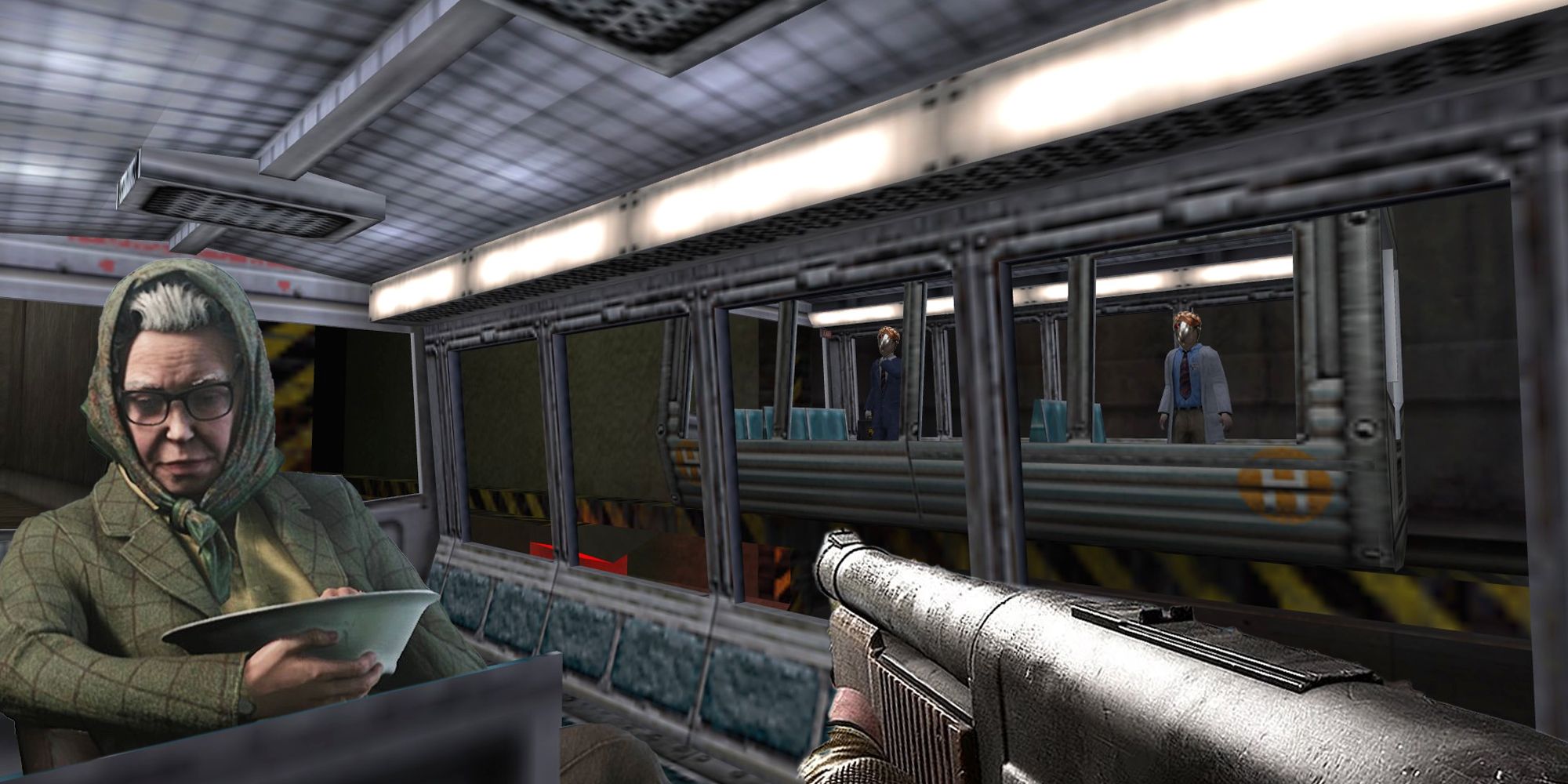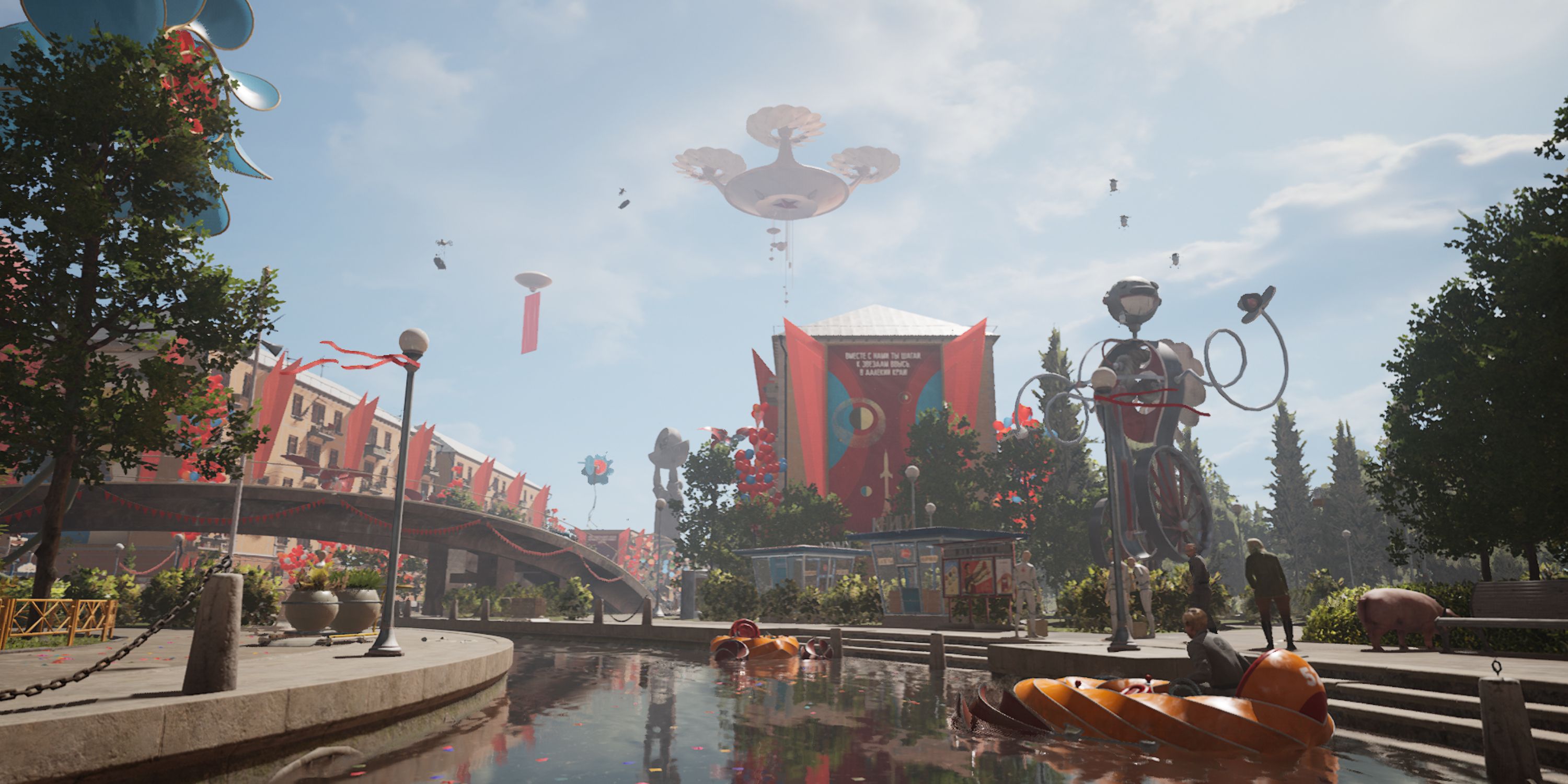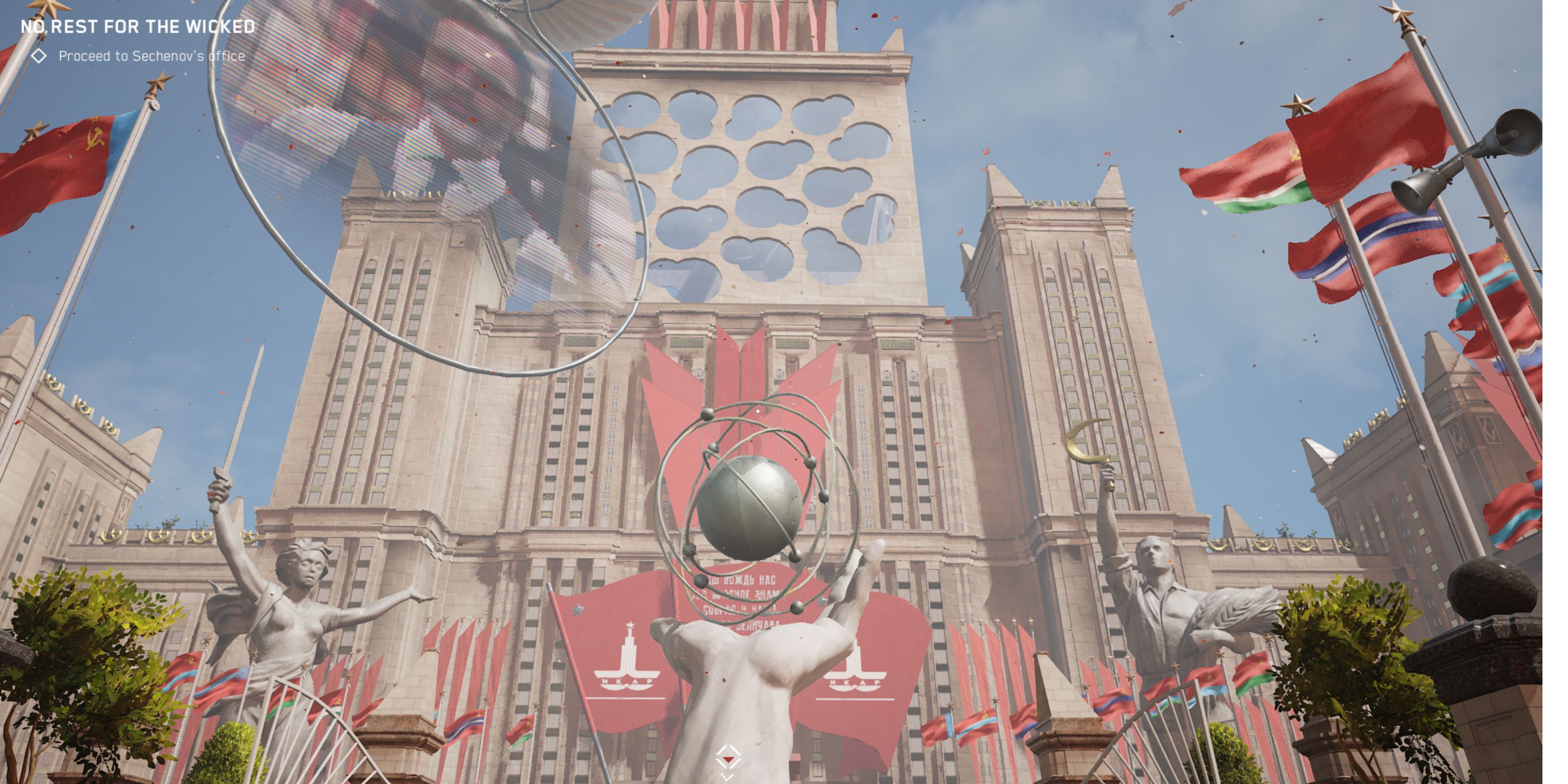I love a good Half-Life-style opening. Despite the fact that I came to Gordon Freeman's first adventure decades after its initial release, the unassuming scientist's tram ride into the Black Mesa facility was just as effective for me in 2020 as I imagine it was for that crop of players discovering it for the first time back in 1998. The sense of immersion you get from entering Freeman's world at the same pace he does is still unmatched.
You know who else seems to love a good Half-Life-style opening? Atomic Heart developer Mundfish. Mundfish loves it so much it put five tram ride equivalents in the first half-hour or so of its game.
Atomic Heart begins with player character Agent P-3 sitting in a boat as it glides down a picturesque canal in The Chelomey Complex, a retrofuturist vision of the USSR complete with automatons, sweeping white architecture, and at least one huge statue of Karl Marx. From the boat, you move to the sidewalk, which leads you on a strictly linear path through the Complex to an important looking building, with a cavernous interior.
There you climb on an elevator, and take a minute-long ride up to get a key at the top of the building. Once you reach the top, two faceless robots stop you, give you a key, and you're immediately headed back onto the elevator to take an equally long ride down. I didn't love the repetition of this, but I was sort of gobsmacked by the audacity of sending you on a fetch quest this early in the game, especially one where the only obstacle between you and the thing you're fetching is an extremely long elevator ride. The game tries to cover up the weirdness of this construction with snark —
"We can take the same elevator we took to get up here!" your electronic glove says brightly.
"Thanks Einstein, what would I ever do without ya?"
— but dialogue only goes so far in the face of bad design. Once you're back on the ground, you walk to a car, climb in, lower the convertible roof, and a flying robot comes and attaches cords to the car and hoists you in the air. From the moment you climb into the car until the moment your airborne vehicle is attacked and crashes, several real-time minutes elapse. This gives you a chance to take in the impressive sight of the Chelomey Complex from the air which does achieve the intended effect of hammering home how nice the game looks. My PC is getting old, so I'm playing on low settings, but even then the art direction comes through loud and clear. The question is, though, does it look so good that I wanted to look at it for five minutes with nothing else to do?
A little later on, you meet an old lady and she lets you into her secret bunker. You climb in and you're in for your third elevator ride of the game thus far. This time, the elevator is in freefall… but it's still an elevator ride.
This has all been done better elsewhere. Whereas Half-Life limited our control for a brief period of time, BioShock Infinite — which Atomic Heart seems very inspired by — evolved this kind of intro with its trip to Columbia. That game's introduction is similarly linear, but it gives you much more time where you are in control of your character's actions. You may have to go from A to B, but BioShock Infinite lets you take your time and poke around as you do it. Rather than allowing you the time to dawdle and look at its world if you want, Atomic Heart pulls the gaming equivalent of the Ludovico Technique, strapping you into a flying car so you have no choice but to look.



